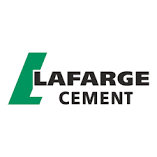Lafarge Cement Plc H1 2022 Results: Net Profit Rose 32.09% Despite Creeping Operating Costs

Lafarge cement pushed through economic headwinds in H1 2022 with a rise in top-line and bottom-line earnings. The cement producer increased top-line earnings by passing cost increases to customers through higher prices, although interest and finance income fell. Analysts noticed an improvement in liquidity, shareholder’s return, and asset utilization.
At its investor and analysts conference in August 2022, the company’s management reiterated its commitment to its sustainability pillars, announced in 2021. The cement maker achieved a thermal substitution rate of 9% for energy products, deriving 1,496,138 Giga joules of energy from a renewable source; the company achieved 157.71L/t for cement production and recycling of over 89,000 tonnes of waste. It also processed 446,000 cubic meters of water across three plants and rehabilitated 600 hectares of land with 16,500 seedlings and 124,000 direct beneficiaries from a N2bn corporate social investment initiative. By the end of 2022, Lafarge Africa will be reintroducing a new product called CO₂MENT, which they issued in late 2020 and stopped for nine months with an investment worth 20 million.
Key Highlight
- The revenue grew by +28.6% (Y-o-Y) from N145bn in H1 2021 to N186.5bn in H1 2022.
- The cost of sale grew by +24.78% from N72.5bn in H1 2021 to N90.5bn in H1 2022
- Profit before tax (PBT) appreciated by +27.57% to N46.9bn in H1 2022, while Profit after tax (PAT) rose (Y-o-Y) by +32.09% from N28.4bn in H1 2021 to N37.4bn in H1 2022
- Basic earnings per share (eps) rose by +31.82% from N176 to N276 in H1 2022
- Total equity increased by +7.93% (Y-o-Y) from N371.85bn in H1 2021 to N399.86bn in H1 2022
- Sales and distribution costs increased by +45.4% (Y-o-Y) from N25.9bn in H1 2021 to N37.7% in H1 2022
- Total assets rose by +11.0 to N568.0bn from N511.7bn in H1 2021
Share Price Movement
Lafarge’s cement share price steadied at the beginning of the year before slipping in March. The share price regained its bullish influx in May and reached a resistance price on May 12, 2022, with a support level of N21.80k on April 5, 2022. Under review, the share price shows a slowly rising trend in August with a Year-to-date return of +6.04% from N24.0k on January 04, 2022, to N25.45k on August 04, 2022 (see chart 1 below).
Chart 1 Lafarge Cement Plc’s Share Price Movement Jan.-August 2022
Revenue
Regardless of the current economic downturn (Q2 2022 GDP growth was 3.54% against Q2 2021 GDP growth of 5.01%), Lafarge cement grew top-line earnings by +28.67%, from N145.0bn in H1 2021 to N186.6bn in H1 2022. Analysts observed that the increase came from cement, aggregates, and concrete sales. Despite the +51.5% spike in production costs driven by high maintenance expenses and rising input prices, the company pulled up revenue with income from government grants and gains from the disposal of property and plant (see chart 2 below).
Chart 2 Lafarge Cement Plc’s Revenues H1 2019-H1 2022

Profit Before Tax (PBT)
Profit before tax (PBT) has progressively risen over the past half-year. In H1 2022, PBT climbed +27.57% Y-o-Y, from N36.75bn in 2021 to N46.88bn in 2022. The cement maker’s bottom-line earnings came from a +50.04% rise in operating profit with a corresponding decline in finance costs. Finance income dipped by -30.11% from N2.66bn to N1.86bn. Concurrently, interest income from short-term fixed deposits fell -32.31% (see chart 3 below).
Chart 3 Lafarge Cement Plc’s PBT H1 2019-H1 2022

Acid Test Ratio
Excluding inventories, Lafarge cement’s Acid test ratio reflected an improved capacity to cover its current liabilities. The ratio rose from 0.64 in H1 2021 to 0.7 in H1 2022. The company saw the highest ratio in H1 2022, propelled by the +36.91 increase in current assets compared to the +25.29 increase in current liabilities. (see chart 4 below).
Chart 4 Lafarge Cement Plc’s Acid Test Ratio H1 2019-h1 2022

Asset Turnover
Over the last four years, the clinker maker’s asset turnover rose by 0.04 each year, rising from 0.20 in 2019 to 0.24 in 2020. In H1 2022, the asset turnover ratio rose by 0.05, from 0.28 in H1 2021 to 0.33 in H1 2022. The notable growth in the asset turnover ratio reflected an +11.0% increase in Lafarge Cement’s total assets (see chart 5 below).
Chart 5 Lafarge Cement Plc’s Asset Turnover Ratio H1 2019-H1 2022

Current Ratio
Lafarge’s liquidity improved in H1 as the current ratio rose to 1.04 in H1 2022 from 0.96 in H1 2021. The cement maker’s current assets exceeded current liabilities, indicating the available short-term assets could cover current financial obligations. (See chart 6 below).
Chart 6 Lafarge Cement Plc’s Current Ratio H1 2019-H1 2022

Leverage Ratio
A look at the company’s balance sheet showed that Lafarge relied heavily on its equity rather than debt, with equity at N399.9bn and total debts at N26.9bn in H1 2022; the firm has heavily financed operations through shareholders’ equity since H1 2020. The company’s debt-to-equity ratio climbed modestly to 0.07 in H1 2022 from 0.05 in H1 2021; the ratio rose on the back of a rise in total debt from N19.7bn in H1 2021 to N26.9bn in H1 2022. (See chart 7 below).
Chart 7 Lafarge Cement Plc’s Leverage Ratio H1 2019-H1 2022

Return on Equity
Analysts observed that the cement producer relied heavily on equity. Shareholders’ return dipped from 0.52 in H1 2019 to 0.34 in H1 2020. After this sharp fall, equity returns moved up steadily in subsequent years. It grew to 0.47 in H1 2022 from 0.39 in H1 2021, supported by a rise in top-line earnings. (See chart 8 below).
Chart 8 Lafarge Cement Plc’s RoE Ratio H1 2019-H1 2022

A Sector’s Cash Conversion Cycle- Different Strokes for Different Folks
Growing operating cash flow is at the heart of a sound business, and corporates find this a tough act to follow. Cement companies are discovering that conversion of purchases on inputs (outflow) to income from sales (inflow) is increasingly difficult. A slowdown in Nigeria’s gross domestic product (GDP) growth (Fitch Global estimates 2022 growth at 2.5% against other forecasts of around 3.4%) could hurt the cement industry cash flow.
A rise in the inflation rate (19.64% as of July 2022) may lead to incremental increases in the Central Bank’s policy rate (MPR) (now at 14%) and higher domestic lending rates. Higher borrowing costs would cut corporate profit after tax (PAT) and reduce local cement makers’ operating and free cash flows in 2022.
In H1 2022, cement makers’ cash conversion cycles (CCCs) were an average of 490 days for Lafarge, 406 days for Dangote cement, and 274 days for BUA. The longer the days of outstanding payables, the more cash was available for the businesses to invest in short-term projects to enhance working capital and cash flow and vice-versa.
Regarding receivables, Dangote led the band with 19 days on hand, followed by Lafarge at 21 days on hand and BUA at 77 days on hand. The quick translation was that the shorter the receivable days on hand, the more cash was available for operations. Dangote had a lower tolerance for delayed payments and, therefore, had superior liquidity than competitors.
The sector’s inventory management dashboard revealed inventory patterns across competing manufacturers. High inventory days indicated the pressure on operating and free cash flows. BUA led the pack with the highest inventory days of 171 days, while Lafarge and Dangote held inventory days of 208 days and 277 days, respectively. In other words, Dangote had the largest stockpile of inventories which counterbalanced its relatively low receivables and thinned down its free cash flow.
The problem of cash and liquidity can be tricky. H1 2022 data shows that BUA Cement had the least liquidity at a negative 25 days working capital days on hand, followed by Dangote at 160 days and Lafarge at 261 days. The longer receivables payment and the shorter payables period reinforced BUA’s weaker working capital cash flow (see illustrations 1 & 2 below).
Illustration 1 Cement Company Cash Conversion Cycles

Illustration 2 Deconstructing Cement Company Cash Cycles

Sweating SWOTs
The industry’s strengths, weaknesses, opportunities and threats are caught in the illustration below (see illustration 3 below).
Illustration 3 SWOT Analysis of Nigeria’s Cement Industry

Doing a Nigerian Cement Industry PESTEL Driveby
Political
Politics has served awkward punches on the jaw of private enterprises in Nigeria, but the cement industry has swerved to dodge the thick fists. Cement makers have enjoyed government tax concessions and other fiscal support. However, with the Federal Government of Nigeria (FGN) in dire fiscal straits, the concessionary environment may be short-lived, except for the biggest clinker makers. Dangote, Lafarge, and BUA may still benefit from road infrastructure-related tax credits, but other preferential treatment may fizzle.
With the 2023 elections creeping nearer, the new federal government may be less prepared to allow potential tax revenues to escape capture. The need to close the government budget gap may see cement companies make higher tax contributions, especially considering Dangote’s gross profit margin of 60%, BUA’S margin of around 30%, and Lafarge’s margin of slightly under 25%.
Beyond taxes, a new government may want to stimulate real estate and infrastructure development by encouraging lower product prices. Nigeria’s cement industry operates as a collusive oligopoly, meaning that product pricing is like that of a monopolist. A revitalized federal competition and consumer protection council (FCCPC) may be less accommodating of sectoral pricing
Economic
The industry’s oligopolistic market structure raises near monopolistic pricing and supernormal profit considerations. Admittedly, the three largest companies have seen costs rise and foreign exchange access fizz, but demand has remained durable, allowing for operating margin protection. Breakeven margins differ across the sector’s front runners, but margins have become relatively modest, with Dangote posting the best.
Social
Cement has been the most common and extensively used block in the construction industry. The product has been used on highways, houses, bridges, commercial establishments, dams, and flyovers. Analysts have credited local cement companies as they have provided several job opportunities.
Technology
Changing the chemistry of cement companies to lessen their reliance on gas and hydro plants could improve product quality by using coal combustion residuals, such as fly ash and slag. These inputs can be used as aggregate in hot mix base courses to improve durability, efficiency, and net CO2 emissions. Cement makers could adopt renewable energy sources such as wind, solar, and waste heat recovery systems in cement manufacturing. Wind power facilities are less expensive to operate and maintain than other energy sources, such as coal. They are fuel-free and ecologically beneficial.
Environmental Factors
The cement industry has contributed to rapid infrastructural development by constructing houses, roads, and offices, summing to production to support economic growth. However, the benefits and contributions are impaired by the industry’s heavy reliance on fossil fuels and non-renewable resources. Scientists estimate that 6% of carbon dioxide greenhouse gas emissions are generated from cement production, which is hazardous to plants and human health. The environmental law and regulations on emissions outrightly affect the industry, although the recent energy shocks have forced a diversion to some non-renewable like coal.
Legal Factors
The dominant players in the cement market show collusive pricing power that has nudged commodity prices above competitive market levels; their market power has created higher profit margins relative to smaller rivals. In 2017, Dangote cement saw a significant rise in cement prices due to relatively weak competition. However, the new Federal Competition and Consumer Protection Act of 2018 has attempted to check market pricing outside broader competitive arrangements.
Nevertheless, the infrastructural contribution of the cement industry has supported economic growth resilience, having received multiple government tax rebates in the construction of roads under section 23 of the company income tax act (CITA).
Illustration 4 Nigeria’s Cement Industry PESTEL Analysis

Last Words
Analysts believe that Nigeria’s GDP growth rate will slow between 2.5% and 3.1% in 2022, leading to a potential reduction in demand for cement as the CBN tries to head off higher inflation rates by raising the monetary policy rate (MPR) to between 15% and 16% in Q3 2022.
While Lafarge cement has managed to grow sales steadily (mainly by raising prices), the headroom for further revenue increases appears slimmer. With the inability to raise prices much higher with slower sales growth, the company’s earnings before tax (PBT) growth would remain modest or decline. What is true of Lafarge Africa cement would affect competitors who would see slower revenue and profit growth.
culled from proshare.






